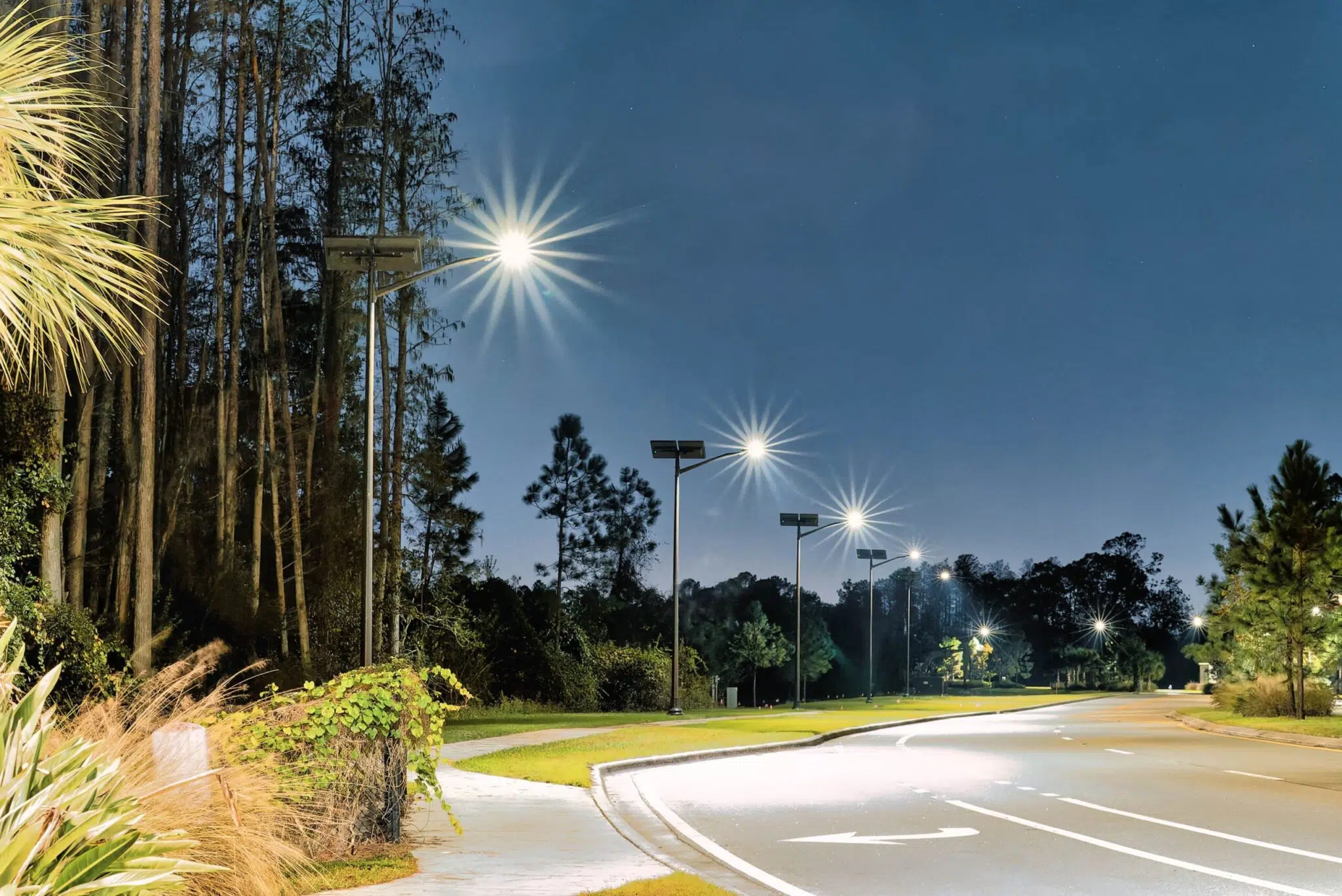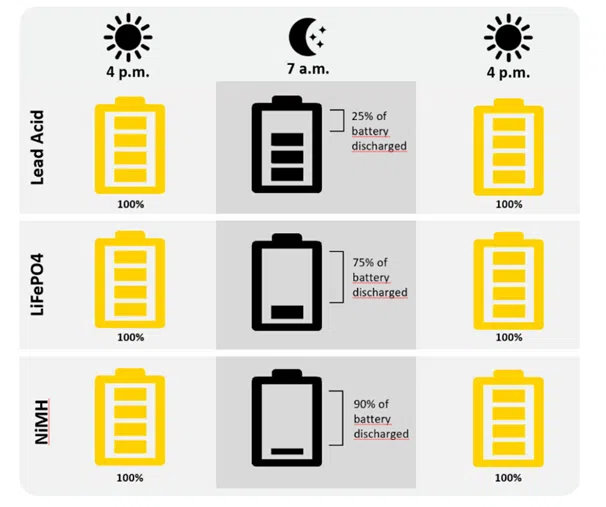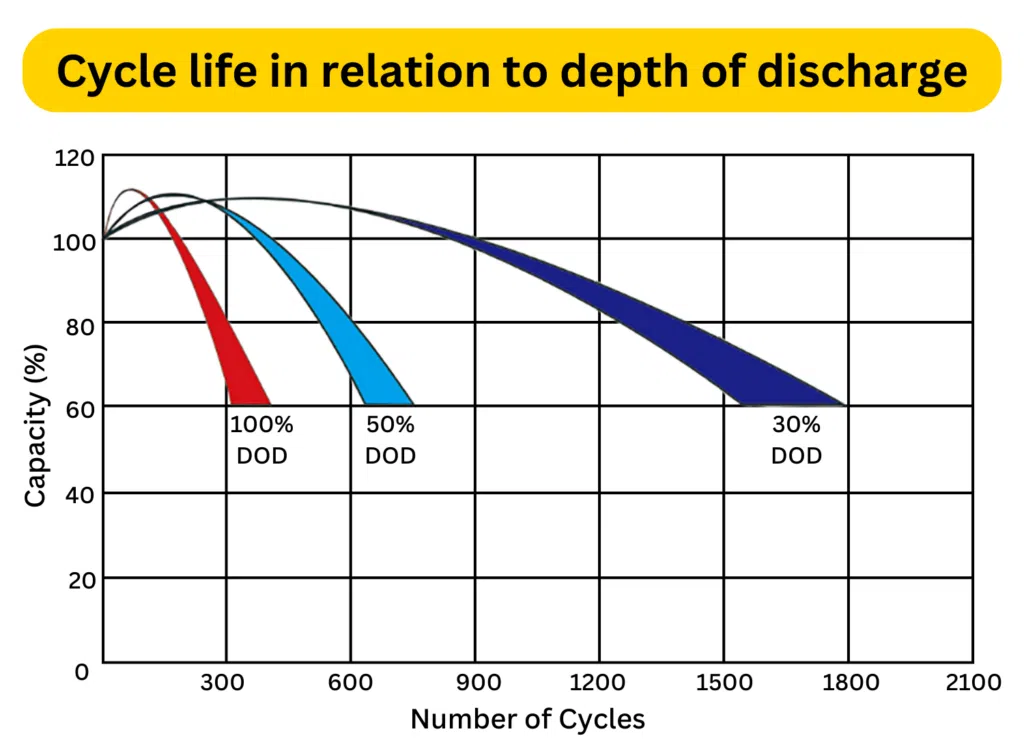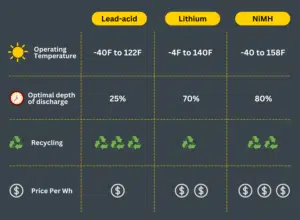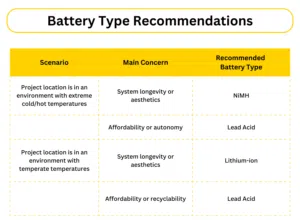Solar lights are a smart and sustainable choice for lighting needs. They rely on sunlight to generate power, using the photovoltaic effect—essentially a scientific process where solar panels convert light into electricity. This energy is stored in batteries, allowing the lights to function when the sun isn't shining.  The challenge with solar systems is that we need light at night, not during the day. This is where batteries come into play. Rechargeable batteries store the energy collected during the day so it can be used later. They also help maintain performance during cloudy or low-light conditions.  Not all batteries are the same. Sol offers three types—lead-acid, NiMH, and LiFePO4—each suited for different applications. Understanding how they work can help you choose the right one for your project.   One of the most important battery metrics is depth of discharge (DOD), which refers to how much of a battery’s capacity you can use before recharging. Some batteries have shallow DODs (around 25%), while others allow deeper discharges (up to 80% or more). Discharging too deeply can significantly reduce a battery's lifespan.  Another key factor is cycle life—the number of times a battery can be charged and discharged before its performance drops. The deeper the discharge, the fewer cycles the battery will last. Temperature also plays a role; higher temperatures can cut battery life in half.    Backup power, or autonomy, refers to how long a battery can power a system without recharging. Even if a system is sized correctly, unpredictable weather can cause issues. A good rule of thumb is to plan for at least two full days of backup power.  To calculate autonomy, divide the usable battery capacity by the system load. For example, a 1500Wh battery powering a 550Wh load would provide about 2.7 days of backup power.   Lead-acid batteries are cost-effective and widely used, but they have a shallow DOD and shorter lifespan. NiMH and LiFePO4 batteries offer deeper discharge capabilities and longer cycle lives. LiFePO4 is especially popular for its compact design and high performance.  Each battery type has its own strengths. Lead-acid is great for cold climates, while LiFePO4 works best in temperate regions. NiMH is versatile and performs well in a range of temperatures.    Climate can greatly affect battery performance. Lead-acid batteries excel in cold environments, while LiFePO4 may not perform as well in extreme cold. NiMH is known for its wide temperature tolerance.  Recyclability is another consideration. Lead-acid batteries are highly recyclable, with over 99% being recycled in the U.S. NiMH and LiFePO4 have lower recycling rates, making lead-acid a more environmentally friendly option in some cases.    Lead-acid batteries are the most affordable upfront, but they require more frequent replacements. LiFePO4 is more expensive initially but lasts longer, offering better value over time. NiMH falls somewhere in between in terms of cost and lifespan.  Choosing the right battery depends on your specific needs, climate, and budget. Working with an experienced manufacturer like Sol ensures you get the best solution for your application.   If you have any questions about batteries or solar technology, feel free to reach out. We're here to help you make the best choices for your project!  Aluminum WENZHOU ICL INDUSTRIAL CO., LTD. , https://www.cniclsteel.comUnderstanding Battery Basics
Backup Power and Autonomy
Comparing Battery Types
Climate and Environmental Factors
Cost and Long-Term Value
Contact Us
July 09, 2025
